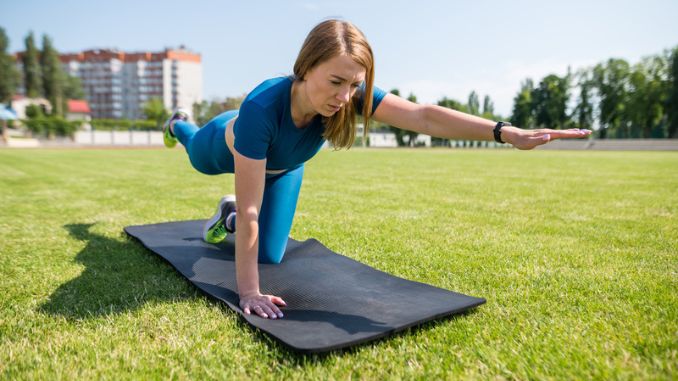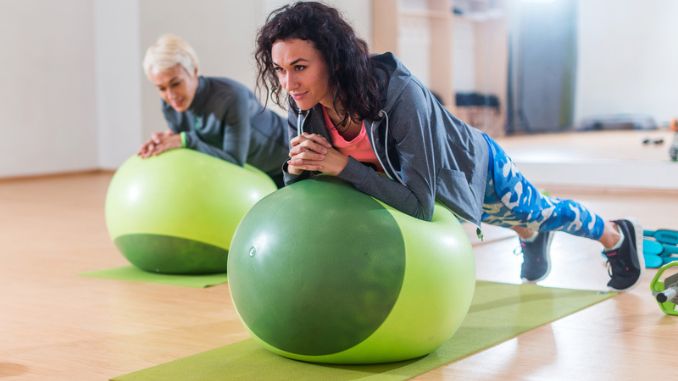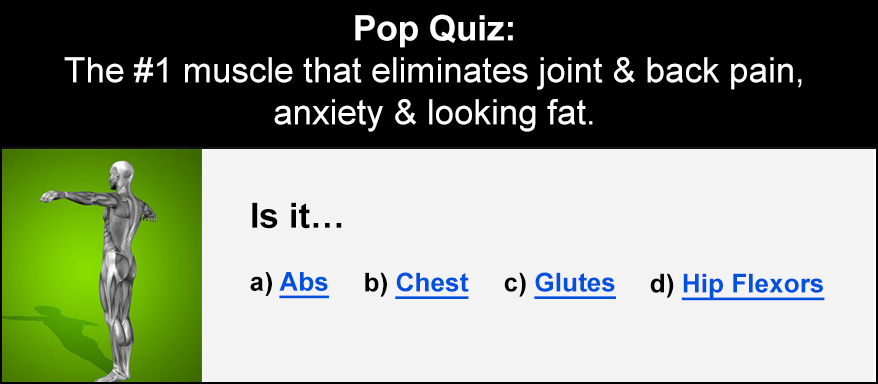Have you ever felt unsteady or struggled to maintain your balance? It’s important to work on exercises to improve your balance to stay stable and avoid injuries. Balance training not only makes you stronger physically but also strengthens the connection between your mind and body.
With these exercises, you can also increase your range of motion and build stronger muscles to improve your posture, feel more confident, or prevent falls, especially in older adults. Balance exercises are the perfect way to achieve these goals.
Get ready to challenge yourself and find out how great balance exercises can be for you.

Understanding Balance
Balance is crucial for maintaining fitness levels, good physical health, and preventing injuries. This is not just about standing still but also about being able to move confidently in different directions.
To improve equilibrium, start by finding a comfortable stand and start position with your feet directly under your hips. From there, try lifting one foot off the ground and balancing on a single leg. Once you feel stable, try taking a step sideways, then return to your starting position.
Physical therapy can also help improve the equilibrium in your body and reduce your chances of falling or getting hurt.

The Components
Physical equilibrium is an essential component of our overall health and well-being. It is the ability to maintain control over our body’s position while stationary or in motion. It can help us easily perform everyday activities, reduce the risk of injury, and improve balance and athletic performance.
There are several components, including:
- Strength: The ability to generate force to stabilize the body
- Coordination: The ability to move body parts in a synchronized manner
- Flexibility: The range of motion around joints that allows us to move freely
- Sensory Perception: The ability to process information from the senses to help maintain stability
- Proprioception: The sense of where our body parts are in space
Example:
- Hiking on a rocky trail. To maintain or improve balance, you need the strength to stabilize your body, the flexibility to step over rocks and other obstacles, and the proprioception to know where your feet are on the ground.
- Playing a sport like soccer. Physical steadiness can help you maintain control of the ball, change direction quickly, and avoid getting knocked down by other players.
- Performing the single-leg squat.To improve balance, maintain a straight line from your head to your right foot while balancing on one leg, with your front foot slightly lifted off the ground, when performing a single-leg squat.
Regardless of the situation, having good physical steadiness can help you perform physical activities better and reduce the risk of injuries. There are ways to improve balance, such as doing strength and coordination exercises.

How Balance Works
Our bodies are incredibly complex systems that work tirelessly to maintain equilibrium and harmony. Achieving stability, or homeostasis, involves a delicate interplay of various bodily functions and processes.
Equilibrium is crucial to our health and affects every aspect of our lives.
- We can move around safely and easily.
- Without it, we wouldn’t be able to perform even the simplest of tasks. Here’s how:
- Another key component of stability in the body is the nervous system. The nervous system helps us detect changes in our environment and respond accordingly.
For example, if you step on a slippery surface, your nervous system will signal your muscles to adjust your stance and help prevent you from falling.

Common Causes of Balance Issues
Aging and various medical conditions can cause balance issues.
The most common causes are:
- Inner-ear problems: Our inner ear contains small organs that help us maintain our footing, and any damage or dysfunction to these organs can result in instability.
- Muscle weakness or joint balance problems: As we age, our muscles naturally weaken, which can lead to difficulty in maintaining steadiness. Joint problems such as arthritis can also affect balance by causing pain or limiting mobility.
- Parkinson’s disease, Multiple Sclerosis, and stroke: These conditions can make it difficult for the brain to process sensory information, making it challenging to keep footing and move around.
- Certain medications: For example, some medications used to treat high blood pressure or anxiety can cause dizziness or lightheadedness, affecting your stability.
- Lifestyle choices: Poor nutrition and not getting enough exercise can create muscle instability and even dizziness.
Remember, it’s never too late to improve your balance and reduce your risk of falling. With the right care and support, you can stay active, independent, and confident in your daily life.

Benefits of Balance Exercises
Balance exercises are essential to any workout routine and offer numerous benefits.
These benefits include:
- Improved Posture: By improving the strength of the muscles that support the spine, such as the core and lower back, balance exercises can help align the body and improve posture. This also reduces the risk of back pain and other related conditions.
- Enhanced Athletic Performance: Many sports, such as gymnastics, skiing, and martial arts, require good balance. By practicing balance exercises, athletes can improve their coordination, agility, and overall performance.
- Improved Brain Function: Studies have shown that balance exercises can improve memory and brain function, especially in older people. People can improve their memory, attention, and overall mental clarity by doing balance exercises that force the brain to stay alert and focused.
- Increased Confidence and Independence: Balance exercises are great for improving your physical stability and mental confidence and independence. As you become more balanced, you’ll start to feel stronger and more in control, which can give you the courage to take on new challenges and live life to the fullest.

Risks
Like any form of exercise, there are risks involved in standing and seated positions.
The risks of balance exercises include:
1. Potential for Falls
When you’re working on improving your balance, you may be putting yourself in positions you’re not used to, which can cause you to lose your balance and take a tumble. This is especially true if you’re doing exercises that involve standing on one leg or moving quickly from one position to another.
2. Overexertion
If you’re not used to working on your balance, you may tire more quickly than expected or experience muscle soreness after your workouts. The most important thing is to maintain good posture.
3. It May Not be Appropriate for Everyone
Suppose you have a history of falls or an underlying medical condition that affects your balance. In these cases, talking to your doctor before starting a new exercise program is important.
These exercises can be a great way to improve your stability and coordination, but it’s important to be conscious of the potential risks involved.
Unbalanced becomes overwhelming and, at times, dangerous.
Fortunately, there are many ways to improve stability safely.

Balance Exercises (Standing Position)
Balance movements and exercises are a great way to improve overall stability and prevent accidental falls, especially as you age. The following exercises are some of the best to keep you on your feet.
1. Sumo Squat to Side Leg Lift
Engage your core. Stand with your feet flat on the floor, slightly wider than shoulder-width apart, and your toes pointing outwards. Bend your knees and push your hips back to lower your body into a sumo squat position. Press your palms together to help you balance. Keep your chest up and your back straight throughout the movement. Use your inner thighs to lift your leg out (either left or right foot) to the side, keeping your foot flexed and your toes pointing forward. Pause at the top of the lift for a few breaths, then return your foot to the starting position. Repeat the movement on the opposite leg. Start with 2 sets of 10-20 repetitions, and gradually increase the holding time up to 30 seconds or the number of sets as you progress.
2. Standing Knee Raise with Under-the-Leg Touch
Stand with your feet flat on the floor, shoulder-width apart, and your arms down by your sides. Lift your left knee to hip level, keeping your core engaged and your back straight. Raise your arms overhead with your palms facing inward, then lower your arms and touch your fingertips under your left thigh. Repeat the movement 3-5 times. Maintain a slow and controlled movement, focusing on engaging your abs and keeping your stability. Throughout the exercise, take deep breaths, inhaling when you lift your knee and exhaling when you touch your fingertips under your thigh. Repeat the movement with the opposite leg. Starting with 1 set of 3-5 repetitions on each side.
Just bring your hands down to the sides of your thighs to make this movement easier.
3. Curtsy Lunge with Inside Knee Raise
Stand straight with your feet hip-width apart. Engage your core. Step back with one foot and cross your leg behind your opposite leg. As you rise back up, slowly raise your knee to the side, flexing your back foot. Lower your foot back down to the floor. Hold this position for a few seconds, then repeat the movement on the opposite side. Start with 1 set of 5 repetitions on each side.
Make sure your foot touches the floor when you step back.
4. Heel Raise with Arms Movement
Stand with your feet shoulder-width apart and your knees slightly bent. Lift your heels as high as possible while keeping your toes on the ground. Hold this position for a few seconds, then slowly curl both arms, lift your arms overhead, and lower them back down. Slowly lower your heels to return to the starting position. Repeat the sequence of movement several times, aiming to complete 10 repetitions.
Remember to engage your core muscles and stretch your calf before and after your workout to avoid injuries and improve flexibility.
To make this exercise more challenging, hold a pair of light dumbbells.

Tips for Effective Balance Training
Maintaining good equilibrium helps prevent injuries and improves your performance in sports and daily activities. Balance training can sometimes seem daunting, especially if you’re starting. But fear not! With a little patience and guidance, you can develop better stability in no time.
Start with simple exercises and gradually challenge yourself — You’ll be amazed at how far you can get! Here are some additional tips for you.
1. Start with the basics
Before diving into advanced balance exercises, having a good foundation is important. Start with simple single-foot exercises or walking heel-to-toe. This will help you build strength and stability in your ankles, knees, and hips.
2. Challenge yourself
Once you feel comfortable with the basics, it’s time to ramp up the difficulty. Try standing on an unstable surface like a rolled-up towel, balance board, or BOSU ball. You can also try exercises that require you to shift your weight from side to side or front to back, like lunges or squats.
3. Incorporate balance training into your daily routine
You don’t have to set aside a specific time for steadiness training. Incorporate it into your daily routine by doing exercises like standing on one foot while brushing your teeth or walking heel-to-toe while walking the dog.
4. Focus on your core
Your core muscles are essential to keep your footing, so ensure you’re incorporating exercises that target them. Plank positions, such as side planks and Russian twists, are all great core exercises that will help improve your balance.
5. Don’t be afraid to use props
Props like a chair, stability ball, or wall can help you maintain your balance while exercising. You can gradually decrease your reliance on these props as you get stronger or more confident.
6. Be patient
Balance training takes time and consistency, so don’t get discouraged if you don’t see results immediately. Keep practicing and challenging yourself, and you’ll see improvements over time.
7. Use proper form and technique
Focusing on engaging your core and distributing your weight evenly between your right leg and the other leg.
8. Listen to your body and seek professional guidance if needed
Listening to your body as you work to improve balance is critical. If you have any concerns or doubts, don’t hesitate to seek guidance from a board-certified clinical specialist who can provide personalized advice and support.
Remember, balance training is an essential component of overall fitness that can benefit everyone. So keep at it, and you’ll be amazed at the progress you can make!

Conclusion
These 4 must-try balance exercises are a great addition to anyone’s daily routine, especially for people recovering from an injury or doing physical therapy. A physical therapist will surely recommend these exercises because they help build strength and stability in the lower body, which is important for performing daily tasks and avoiding falls. Incorporate these exercises into your daily routine to stand stronger, increase confidence, and improve balance. Remember, improving your balance takes time and patience, so be kind to yourself as you work towards your goals. So stand tall, take a deep breath, and take the first step to a healthier, stronger, safer, and more balanced you!







